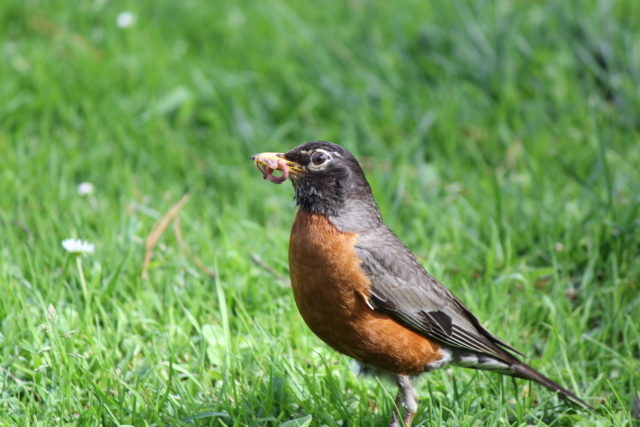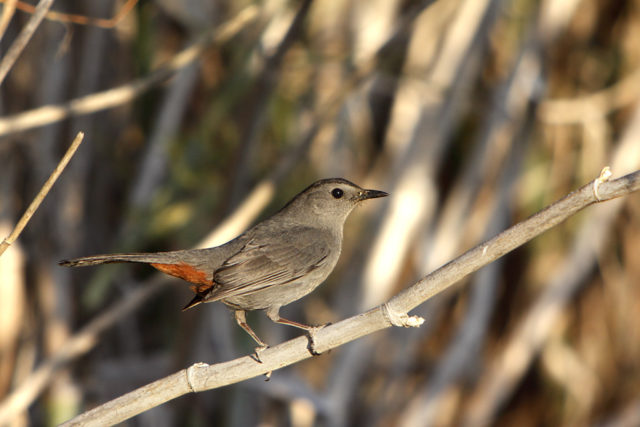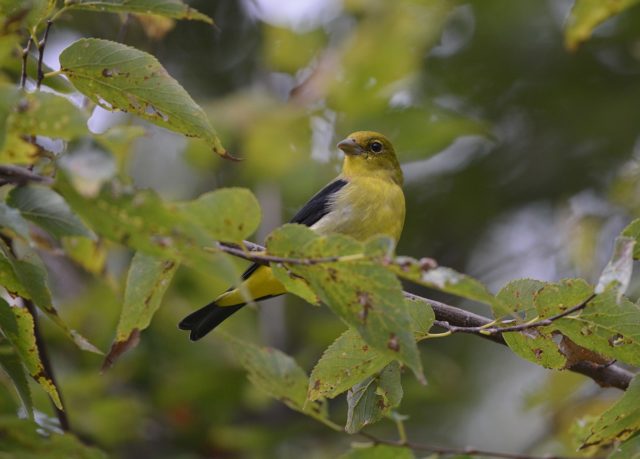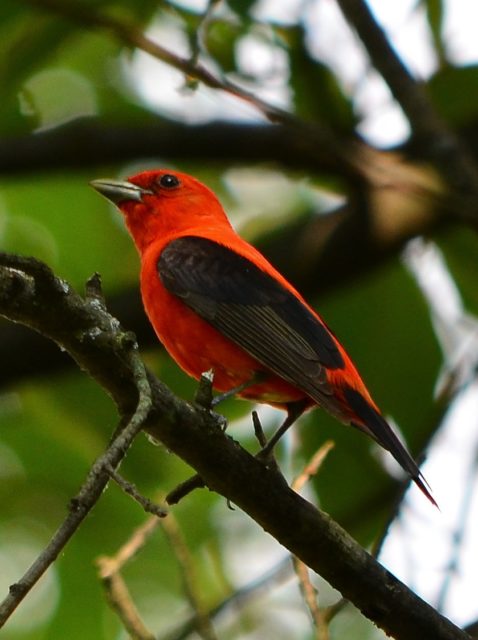By: Xandri Clifton, SCA Interpretive Ranger for Greenfield and Monadnock State Parks
With the shift into Spring (or mud season as I hear it called here) some of our part-time residents have made their way back into the state. I’ve made a list of some of my favorites to look out for, in your backyard or local state park.
1. The American Robin

(Photo Credit: Melahi3.14, Wikimedia Commons)
One of the first signs of Spring are these energetically hopping thrushes! American Robins will sometimes overwinter in Southern NH, but they stay in large flocks (usually over 100 birds) to survive the cold. Once you see them worm-hunting in lawns, Spring is sure to come. Besides worms, Robins will eat berries and other insects they find. If you watch a group of Robins worm hunting on clear ground, you’ll notice they are careful about how close they are to other birds. They may stay close in Winter for warmth, but now it’s time to claim food territories! If you listen, you’ll hear them warning the others about their personal space.
Here’s what to listen for:
2. The Grey Catbird

(Photo Credit: Alan Vernon, Wikimedia Commons)
One of my favorite sounds of Spring, the Grey Catbird. While this bird may look plainer than our other songbirds, it has a call to make up for it. It is related to Mockingbirds, and definitely shows it.
Trying to describe it won’t do it justice, so here’s the audio, you’ll hear the trademark call at 1:45:
I think that bird song is just the cat’s meow (ba dum tss). You’re more likely to hear this one than see it, so keep your ears open—especially in thick forests. They like to hide in shrubbery; if you catch a glimpse of one, be sure to look for that cinnamon rump!
3. The Scarlet Tanager

(Photo Credit: Andy Reago & Chrissy McClarren, Flickr/Creative Commons)

(Photo Credit: Cheepshot, Flickr/Creative Commons)
Arguably the most striking migratory bird is the Scarlet Tanager. These birds make the incredibly long journey from South America to spend Summer with us. The scarlet coloring is only on the males, and only lasts a couple months. At the end of the Summer, they will start to molt back into their olive-green colors for their return trip to South America. The females will have the olive coloration year round. These birds can be a little tricky to spot, despite being brightly colored, because of their tendency to stay up in canopy cover, but if you here this call, start searching!
Here’s what to listen for:
4. The Green Heron

(Photo Credit: Hans Hillewaert,Creative Commons)
A relative of the more commonly known Great Blue Heron, the Green Heron has also made its way back into the area from Florida and Central America. These birds are often found perching in trees near marshes, rivers, or ponds. You’ll have to keep your eyes peeled for these ones, because they often sit completely still waiting for prey to catch their eye.
If you spend time in some of the marshy areas around here, you’ll probably recognize their call:
5. The Osprey

(Photo by Velo Steve, Wikimedia Commons)
Also known as Fish Hawks, these raptors (i.e. birds-of-prey) migrate away from areas with frozen waters, only to return with the thaw. We had no shortage of frozen water up here in the Winter, so the Osprey made their way down the Atlantic coast but have returned for the season. As you might guess from their nickname, they are primarily fish-eaters. Unlike other fish-eaters, the Osprey will dive into the water to catch its prey. In areas where Bald Eagles reside, the Eagles have been known to lie in wait as Osprey fish, and steal the meal as soon as the hawk has its prey. Ospreys are too successful at hunting for their own good!
If you’re near water and hear this, you can have a look around for these diving raptors:
And those are just a few to look out for this season! We also have our nonmigratory birds that will be out and about more with the warmer weather. If you’re interested in birding in Southern NH, check out the Discover the Power of Parks program calendar, and see when I’ll be leading birding programs or hikes at Greenfield State Park or Monadnock State Park this summer!

